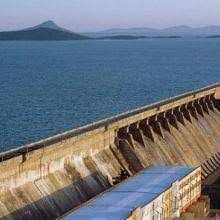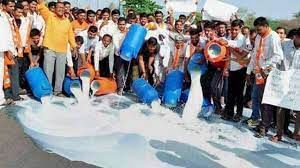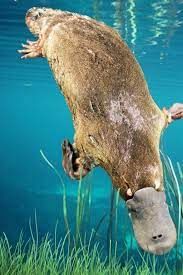UPSC Daily Current Affairs- 5th October 2023 | Current Affairs & Hindu Analysis: Daily, Weekly & Monthly PDF Download
GS-I
Chenab Bridge
Subject: Geography

Why in News?
Chenab Bridge, the world’s highest steel arch rail bridge situated in Jammu and Kashmir’s Reasi town, is set to be developed as a tourist spot.
About Chenab Bridge:
- Location: It is located between Bakkal and Kauri in the Reasi district of Jammu and Kashmir (J&K).
- The 1.3-km-long bridge is located 359 metres above the Chenab riverbed.
- It is the highest single-arch railway bridge in the world.
- It is part of the Udhampur-Srinagar-Baramulla Rail Link project.
- Features:
- The arch consists of steel boxes. Concrete has been filled in the boxes to improve stability.
- The bridge has been designed with a life span of 120 years.
- It has been designed to withstand high wind speeds of up to 266 Kmph.
- It is capable of withstanding the nation’s maximum intensity zone-V earthquake forces.
Key Facts about Udhampur-Srinagar-Baramulla Rail Link (USBRL) Project:
- The USBRL Project involves the construction of a railway line from Udhampur to Baramulla, joining the Kashmir valley with the Indian Railways network.
- Aim: To connect Kashmir to the rest of the country and give a push to development in the valley.
- Total Length: 272 km
- The project was declared a “National Project” in 2002.
- The project includes the construction of several bridges and tunnels along the route.
- This project involves 38 tunnels (combined length of 119 Km), with the longest tunnel (T-49) having a length of 12.75 Km and is the country's longest transportation tunnel.
- There are 927 nos. of bridges (combined length of 13 Km), including the iconic Chenab Bridge.
- The project includes the Indian Railway's first cable-stayed, bridge which is being constructed on Anji Khad.
Source: Financial Express
Hirakud reservoir
Subject: Geography
Why in News?
High levels of cancer-causing heavy metals such as lead and chromium have been found in eight wetlands in Odisha, including the Hirakud reservoir recently.
Background:-
- The findings were recorded in a new study published in the journal Scientific Reports on September 28, 2023.
- The selected eight wetlands were: Natural ones such as Chandaneswar, Chilika, Daringbadi, and Koraput as well as constructed ones like Bhadrak, Hirakud, Talcher, and Titlagarh.
- The highest concentrations of heavy metal pollutants, lead (51.25 micrograms per gram) and chromium (266 micrograms per gram) were recorded in Hirakud.
- Heavy metal pollutants that commonly accumulate in wetlands as a result of human activity include lead, chromium, cadmium, copper, mercury, nickel, zinc, manganese, and arsenic. These metals can enter crops through the soil, which are then consumed by humans.
About Hirakud reservoir:-
- Location: Odisha.
- Area: 65,400 ha
- River: Mahanadi.
- The Hirakud reservoir is one of the largest human-made reservoirs in India.
- It is built across the Mahanadi River by a combination of earth and modern dams with a total length of almost 26 kilometers.
- The reservoir helps regulate the water level of the river.
- It thereby moderates the impact of floods in the Mahanadi Delta.
- It was designated a Ramsar site in 2021
- Biodiversity: It provides habitat for over 130 bird species and about 54 fish, with one classified as endangered and six others as near-threatened.
- Economic significance: 21 fish species are economically important to the region as they provide a total yield of 480 tonnes per year, supporting the livelihoods of over 7,000 fishermen.
- The reservoir also produces around 350 megawatts of hydropower.
- It also irrigates 436,000 hectares of land.
- Tourism: The rich biodiversity and other recreational activities in and around the reservoir make it a popular tourist destination, with over 30,000 tourists visiting annually.
Source: Down to Earth
GS-II
Unlawful Activities (Prevention) Act
Subject: Polity

Why in News?
Recently, the Centre declared the National Liberation Front of Tripura, All Tripura Tiger Force, and their factions as unlawful associations under the Unlawful Activities (Prevention) Act.
Background:-
- The Home Ministry has banned these organizations for five years.
- The Ministry said, the government is of the opinion that the activities of NLFT and ATTF are detrimental to the sovereignty and integrity of India and that they are unlawful associations.
About the Unlawful Activities (Prevention) Act, 1967:-
- It is an anti-terror law aimed at the prevention of unlawful activity and associations in India.
- Objective: to make powers available for dealing with activities directed against the integrity and sovereignty of India.
- The Act assigns absolute power to the Central Government.
- It can declare an activity as unlawful, by way of an Official Gazette. (Misuse of UAPA)
- Applicability: Under the act, both Indian and foreign nationals can be charged.
- Punishment: The act has the death penalty and life imprisonment as the highest punishments.
- Duration of punishment: Under section 43D, police are empowered to detain the accused in police custody for 30 days and in judicial custody for a period of 180 days without the charge sheet.
- This duration can be extended further after information to the court.
- The Act empowers the Director General of the National Investigation Agency (NIA) to grant approval for the seizure or attachment of property when the case is investigated by the said agency.
- The Act empowers the officers of the NIA, of the rank of Inspector or above, to investigate cases of terrorism in addition to those conducted by the DSP or ACP or above rank officer in the state.
Recent Amendment:-
- So far the Act has been amended six times and the last one being 2019.
- The most recent amendment of the law, the Unlawful Activities (Prevention) Amendment Act, 2019 (UAPA2019).
- It has made it possible for the Union Government to designate individuals as terrorists without following any formal judicial process.
Source: AIR
Kevin McCarthy becomes the first Speaker ever to be ousted from the Office
Subject: International Relations
Why in News?
The Speaker of the United States House of Representatives Kevin McCarthy was voted out of the job by a handful of hand-liner Republican leaders.
- These leaders criticised McCarthy for mishandling government spending and budget fights since the GOP took over the House in January.
- They also accused McCarthy of cutting a secret side deal with US President Joe Biden on providing additional funding to Ukraine.
- This is the first time ever that a House Speaker has lost a no-confidence vote.
- The final tally stood at 216-210, with eight Republicans voting with 208 Democrats.
- This marked the end of McCarthy’s tumultuous nine-month-long leadership of the Republican majority in the lower chamber of Congress.
What is a Speaker of the House?
- The US Constitution established the role of Speaker of the House, which oversees the lower chamber of Congress.
- The Speaker is both traditionally and historically a sitting member of the majority party, though this is not a constitutional requirement.
- Therefore, in addition to leading the House of Representatives, they are also leader of the majority party in the chamber.
What is the role of the Speaker?
- At a practical level, the Speaker:
- sets the House's legislative agenda,
- controls committee assignments,
- sets the vote and work calendar, and
- is responsible for keeping their party members unified behind major initiatives.
- The Speaker is second in line for the presidency, following the Vice-President, in the event of the President being incapable of continuing in office.
Why is the Speaker of the House so important?
- Depending on the partisan makeup of Congress, they can make or break a US president's agenda, stymie opposition, and spearhead their party's biggest legislative initiatives.
- A shrewd and effective Speaker will be able to marshal their members behind their party's agenda, and control rebellious lawmakers by doling out incentives or punishments.
How is a Speaker chosen?
- No House without a speaker
- The House of Representatives functions on a two-year cycle, known as a "session."
- The mid-term elections were held in the United States on 8 November, 2022.
- The new Congress began on 3 January 2023 and Republicans will be in the majority.
- The very first thing a new session of the House of Representatives must do is vote for a Speaker of the House.
- Without that person in place, the chamber cannot move on to any other function, including swearing-in members.
- The chamber must continue to hold votes until a Speaker is elected.
- The House of Representatives functions on a two-year cycle, known as a "session."
- Nomination for Speaker
- In the weeks after an election, the Republican conference and the Democratic caucus hold an informal vote among their members.
- This voting is done to decide who they want to nominate to lead their party.
- But members are not obligated to vote for the party's chosen candidate.
- While it has been the tradition for the speaker candidate to be a member of the House, it is not required.
- In the weeks after an election, the Republican conference and the Democratic caucus hold an informal vote among their members.
- Voting
- The vote for Speaker requires a candidate to receive the support of a majority of the House - 218 votes (out of the 435 members of the House).
- The existing leader of the majority party is usually presumed to be the person to assume the speakership.
- For more than a century, the Speaker of the House was decided on the first vote.
- However, this time, a record-making 15 voting rounds were conducted before McCarthy succeeded in acquiring the Speaker’s gavel.
Removal of the speaker of the House
- Under the newly adopted rule (in January 2023), any single member of the House could offer a privileged resolution declaring the Office of Speaker vacant.
- The term “privileged” refers to a matter that has precedence over regular House business.
- Procedural votes could be offered to slow down the motion, but when it does come to the floor, it would need only a simple majority of the House — or 218 members currently — to pass.
News Summary: Kevin McCarthy becomes the first Speaker ever to be ousted from the Office
- The United States House of Representatives has removed its speaker, a Republican, for the first time in the body’s 234-year history.
Acting speaker after McCarthy’s removal
- Republican Representative Patrick McHenry, a McCarthy ally, was temporarily appointed acting speaker.
- He can only serve for a very limited time – up to three legislative days in this case.
- The acting speaker temporary duties are vague. According to a guide to the chamber’s rules and procedures:
- That person may exercise such authorities of the office of speaker as may be necessary and appropriate pending the election of a speaker or speaker pro tempore.
Source: Indian Express
Carbon Border Adjustment Mechanism
Subject: Governance

Why in News?
Recently announced the European Union’s Carbon Border Adjustment Mechanisms likely to hurt India’s economic interests.
About Carbon Border Adjustment Mechanism (CBAM):
- A carbon border adjustment tax is a duty on imports based on the amount of carbon emissions resulting from the production of the product in question.
- For example tax on production of cement or fertilizers.
- In 2021, the European Union (EU) proposed the CBAM, which would tax very carbon-intensive items such as cement and steel beginning in 2026.
- CBAM is part of the “Fit for 55 in 2030 package”, the EU’s plan to reduce greenhouse gas emissions by at least 55% by 2030 compared to 1990 levels.
Advantages of implementing CBAM:
- Promotes decarbonisation globally: The CBAM provides an incentive for countries to reduce their carbon emissions.
- If a country wants to export steel to the EU, the policy imposes an extra cost if the steel is produced using carbon-intensive processes.
- This encourages manufacturers to adopt cleaner, less carbon-intensive methods of production.
- Prevents carbon leakage: CBAM prevents “carbon leakage”, the phenomenon where companies transfer their operations to countries with less stringent emissions regulations.
- For example, if a cement manufacturer moves from the EU to a country with fewer regulations, it might increase emissions.
- The CBAM discourages this by imposing a border tax on carbon-intensive imported goods.
- Level playing field for businesses: The CBAM helps create a level playing field between domestic businesses in the EU and foreign companies.
- CBAM ensures foreign producers are subject to a carbon cost, ensuring fairness.
- Revenue generation for climate initiatives: CBAM will generate revenue through border taxes on carbon-intensive goods.
- This can be used to fund climate initiatives or capacity-building measures in developing countries or Least Developed Countries (LDCs) if the EU decides to allocate it in this manner.
- Stimulates innovation in clean technologies: CBAM can stimulate innovation in clean technologies.
- Faced with a potential CBAM charge, industries may be motivated to invest in new technologies to reduce their carbon emissions.
- Encourages other countries to adopt carbon pricing: CBAM may encourage other countries to implement their own carbon pricing mechanisms.
- The aim is to avoid CBAM charges, as goods from countries with equivalent carbon pricing mechanisms are exempt.
- This could potentially lead to the broad adoption of carbon pricing, further facilitating global decarbonisation.
Challenges associated with the Carbon Border Adjustment Mechanism (CBAM):
- Complexity: The CBAM is a complex policy proposal that involves assessing the carbon content of imported goods, issuing certificates, and ensuring compliance with reporting and payment requirements.
- Complexity of calculating carbon content: It could be challenging to calculate the carbon content of certain products, especially if the production process involves multiple stages or takes place in countries with weaker climate policies.
- Double carbon pricing: There is a risk of double carbon pricing, where companies would be subject to carbon pricing both in the EU and in their home country.
- This could lead to increased costs for businesses and could undermine the effectiveness of the CBAM.
- Trade disputes: The CBAM is likely to face opposition from non-EU countries, who may view the policy as a form of protectionism.
Concerns before India:
- Acting as a trade barrier: With the EU’s CBAM in effect soon, India’s exports of carbon-laden products to Europe—mainly aluminium and iron-and-steel—have been burdened with green reporting rules which is a trade barrier in itself.
- This action by the EU is likely to hurt our economic interests, which explains why the government might protest it as an unfair tariff at the World Trade Organization (WTO).
- Goal of 5 trillion economy: A prerequisite for India to become a 5 trillion economy is to expand its exports and the EU is India’s third largest trading partner.
- EU accounted for €88 billion in goods trade in 2021, or 10.8% of total Indian trade.
- Uncompetitive exports: India’s products have a higher carbon intensity than its European counterparts, the carbon tariffs imposed will be proportionally higher making Indian exports substantially uncompetitive.
- May push for similar regulations worldwide: International climate policies (including CBAM) will compel other countries to impose similar regulation eventually translating to ‘a significant impact’ on India’s trading relationships and balance of payments.
Way Forward: Suggestive measures
- Minimising Impact: Indian exporters must factor in CBT into their costing and prepare to minimise its impact as it will affect lakhs of small and big firms.
- Focusing on greener production options: The rate of CBT depends on how much carbon has been emitted during production to make the export product.
- So, there is a need to explore greener production options for the production of the concerned commodities.
- Using power generated from renewable energy: This will immediately lower the carbon load, fossil fuels like coal, oil, or natural gas cause 75 per cent of global carbon dioxide emissions.
- Wind, solar and green hydrogen are current options but switching to new technology is expensive and may only be feasible in some cases.
- Sharing emission data: Indian exporters of steel, aluminium, cement, fertiliser, hydrogen, and electricity will need to share precise emission data with the counterpart EU importers, who will share the data with the CBT authorities.
- Scientifically capturing this data will need the help of energy auditors.
Source: The Hindu
GS-III
India’s milk crisis
Subject: Economy

Why in News?
India, the world’s leading milk producer for decades, faces a concerning dilemma as milk prices soar to all-time highs.
Central Idea
- India is grappling with an unprecedented milk crisis, despite accounting for a quarter of global milk production. In 2021–22, the country produced a staggering 221 million tonnes of milk, as reported by the UN Food and Agriculture Organization (FAO). However, the situation on the ground paints a different picture, with milk prices reaching record highs.
The price surge
- The Department of Consumer Affairs reveals a sharp 18.08 percent increase in the average retail price of milk over the past two years.
- A liter of milk, once priced at Rs 49.18 in 2021, now costs upwards of Rs 58. This dramatic price rise, commencing in 2022–23, has been the chief driver of food inflation across the nation, as highlighted by the National Bank for Agriculture and Rural Development (NABARD).
Underlying factors behind India’s milk crisis
- Lumpy Skin Disease (LSD):
- One of the primary factors contributing to the milk crisis is the outbreak of lumpy skin disease (LSD) among cattle and buffaloes.
- This disease, first reported in Odisha in 2019, has since spread to almost all states in India. Between July 2022 and 2023, more than 3.2 million cattle and buffaloes contracted LSD, with 0.2 million of them succumbing to the disease.
- LSD has not only caused significant mortality but has also led to a substantial drop in milk production, ranging from 20 to 50 percent, depending on the breed.
- COVID-19 Pandemic Impact:
- The COVID-19 pandemic had a severe impact on India’s dairy sector. During the lockdowns, many farmers reduced the size of their herds in response to disrupted milk demand.
- This exodus of dairy farmers, even during the flush season from October to March, when animals naturally produce more milk, has affected the country’s overall milk production.
- Fodder Inflation:
- Dairy farmers who continued their operations despite the pandemic faced an acute shortage of dry fodder in 2022. This shortage was partly caused by a decline in wheat stocks due to an unusually hot March in 2022.
- As a result, farmers have been grappling with steadily rising fodder prices, affecting both the quantity and quality of the feed provided to their cattle.
- Changing Preferences:
- Dairy farmers are increasingly opting for crossbred cows over buffaloes.
- While buffalo milk typically has a higher fat content (7–10 percent), crossbred cows have a higher milk yield, averaging 8.52 kg per day in 2021–22, compared to a buffalo’s average of 5.96 kg per day.
- This shift in preference has led to a significant increase in the population of crossbred cows, while the population of female buffalo and indigenous cows has grown at a slower rate.
- Cost Considerations:
- Buffaloes tend to be more expensive than cows, with the average cost of a good-breed buffalo ranging from Rs 1.5 lakh to Rs 3 lakh.
- In cases where dairy farming experiences losses, it becomes challenging for farmers to recover their investments.
- Additionally, buffaloes have been perceived as less productive compared to cows in certain scenarios, particularly when it comes to maintaining consistent milk production.
Hidden Crisis: Artificial Insemination
- Role of Artificial Insemination:
- Artificial insemination plays a pivotal role in enhancing milk production in India.
- While the adoption rate of this technology in the country is around 30 percent, it has led to the development of high-yield crossbreeds and improved indigenous breeds.
- These high-yield animals significantly contribute to the overall growth of the dairy sector.
- Missed artificial insemination:
- The COVID-19 pandemic and associated lockdowns and restrictions had a profound impact on the practice of artificial insemination.
- Between 2020 and 2022, as lockdowns and movement restrictions were imposed, India likely missed conducting approximately 16.84 million artificial insemination.
- This represents a significant setback in efforts to improve breed productivity.
- Impact on Milk Production:
- The missed artificial insemination have had a cascading impact on milk production.
- Before the pandemic, India was steadily increasing its adoption of artificial insemination, with over 80 million insemination conducted in 2019–20.
- However, the subsequent drop in insemination numbers means that India potentially missed the chance to add 2.97 million high-yield female cattle to its livestock inventory between 2020 and 2022.
- Economic Consequences:
- Each missed artificial insemination results in both milk loss and additional maintenance costs until a successful conception occurs.
- The estimated loss per missed conception is approximately Rs 7,948.50. This loss quickly accumulates, resulting in a national loss of Rs 824 crore in just the month of April 2020.
Far-reaching Consequences of India’s Milk Crisis
- Economic Impact: The sharp rise in milk prices coupled with supply constraints can lead to reduced incomes for dairy farmers, potentially pushing many into financial distress.
- Food Inflation: As milk and dairy products are dietary staples for a considerable portion of the population, their increased prices can strain household budgets and lead to higher food costs for consumers.
- Nutrition and Food Security: Milk is a vital source of nutrition, particularly for children. Rising milk prices can reduce access to this nutritious food source for vulnerable populations, potentially affecting the nutritional status and food security of millions.
- Rural Livelihoods: Dairy farming serves as a primary source of income for numerous rural households in India. The ongoing crisis directly impacts the livelihoods of these families, causing economic instability and necessitating alternative income sources.
- Agricultural Productivity: Dairy farming often complements crop production, so disruptions in the dairy sector can have ripple effects on overall agricultural performance.
- Global Trade: As one of the world’s major milk producers, India’s domestic dairy challenges can have implications for the global dairy market. Disruptions in production and trade can impact international dairy prices and trade dynamics.
Way forward
- Disease Control: Implement robust disease control measures, including vaccination programs, quarantine protocols, and veterinary support, to prevent the further spread of diseases like lumpy skin disease (LSD) affecting livestock.
- Fodder Management: Develop strategies to increase fodder production, conservation, and distribution to ensure a consistent supply for dairy cattle and buffaloes, addressing challenges posed by fodder shortages.
- Artificial Insemination Programs: Renew the focus on artificial insemination programs to recover from the setbacks caused by missed insemination during the pandemic. This includes technology adoption, training for insemination technicians, and incentives for farmers.
- Genetic Improvement: Continue efforts in genetic improvement through artificial insemination to boost milk production, focusing on enhancing the productivity of high-yield dairy cattle and buffaloes.
- Price Stabilization: Consider measures to stabilize milk prices, potentially involving price support mechanisms or policies to balance supply and demand.
- Government Policy Review: Assess and update existing government initiatives in the dairy sector as necessary, making policy adjustments to address evolving challenges faced by dairy farmers.
Conclusion
- India’s dairy sector, once a beacon of success, now faces multifaceted challenges that threaten its stability. As the nation endeavors to restore its dairy glory, policymakers, researchers, and farmers must collaborate to navigate these challenging times and secure the future of India’s dairy industry.
Source: The Hindu
Platypus
Subject: Environment

Why in News?
New research revealed that platypuses are disappearing from waterways after the Black Summer bushfires swept across eastern Australia in 2019–20.
About Platypus:
- It is a duck-billed, beaver-tailed, otter-footed, egg-laying mammal.
- It is a small species of semi-aquatic mammal indigenous to the eastern coast of Australia.
- They are solitary animal that despite occupying overlapping home ranges, only comes together during the breeding season.
- They are nocturnal hunters.
- Habitat: They are found in freshwater systems from tropical rainforest lowlands and plateaus of far northern Queensland to cold, high altitudes of Tasmania and the Australian Alps.
- Appearance
- The platypus is an animal with a small, streamlined body that is covered in short and dense waterproof fur.
- The watertight nostrils on its bill remain sealed so that the animal can stay submerged for up to two minutes as it forages for food.
- The bill also comes equipped with specialized nerve endings, called electroreceptors, which detect tiny electrical currents generated by the muscular contractions of prey.
- Male platypuses have a spur on the inner side of each ankle that is connected to a venom gland located over the thighs.
- Diet: They are carnivorous mammal whose diet is almost solely comprised of bottom-dwelling aquatic creatures.
- Conservation status
- IUCN: Near Threatened
Source: Down To Earth
|
38 videos|5293 docs|1118 tests
|
FAQs on UPSC Daily Current Affairs- 5th October 2023 - Current Affairs & Hindu Analysis: Daily, Weekly & Monthly
| 1. What is the Chenab Bridge? |  |
| 2. What is the Hirakud reservoir? |  |
| 3. What is the Unlawful Activities (Prevention) Act? |  |
| 4. Who is Kevin McCarthy and why was he ousted from the Office? |  |
| 5. What is the Carbon Border Adjustment Mechanism? |  |
















